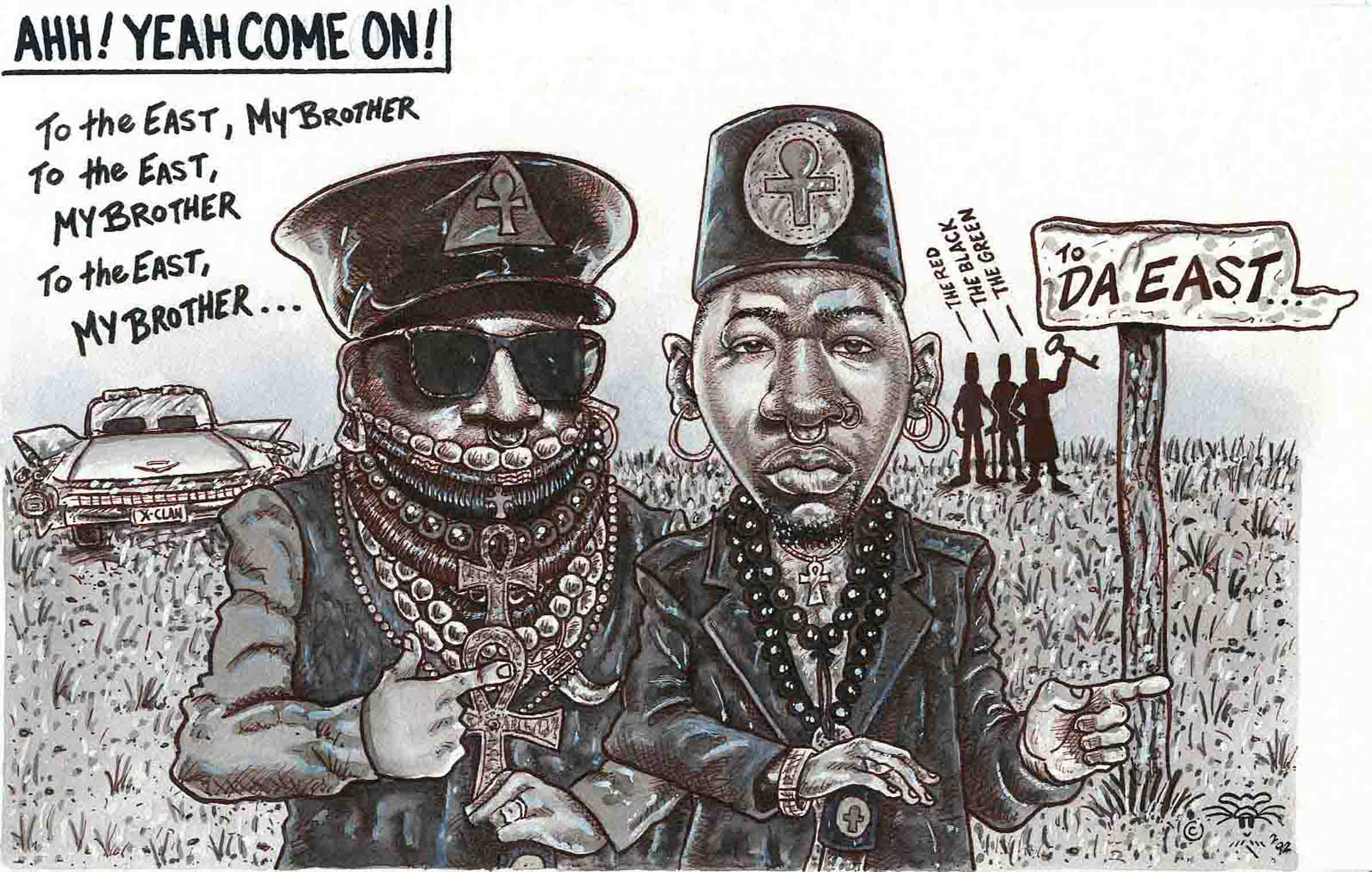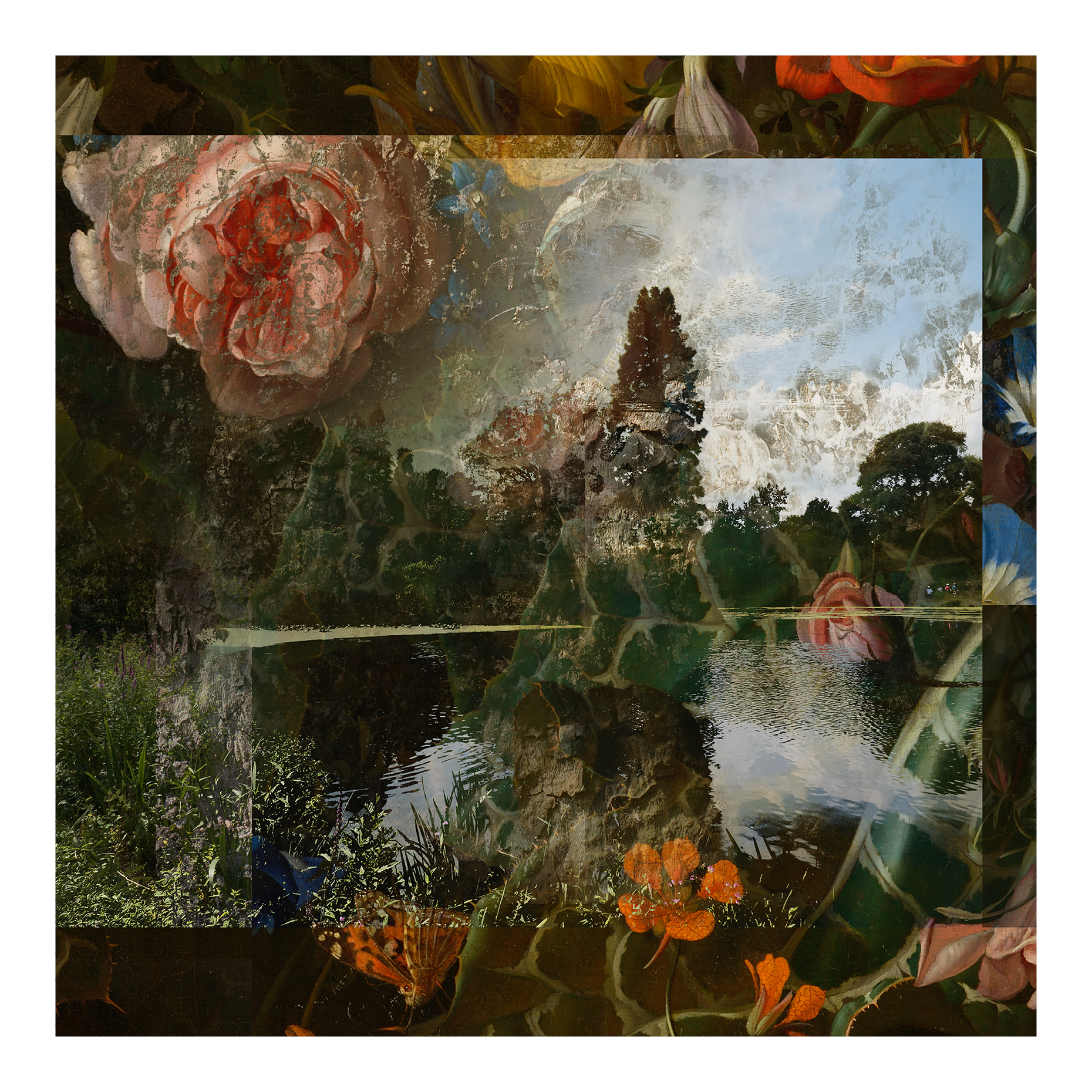Forbidden Planet’s Idiosyncratic Cover Design

Forbidden Planet only has seven releases to its name, but the Canadian imprint has a decidedly distinct aesthetic. Sonically, 23 year-old label founder and art history graduate Jurg Haller has compiled a row of exceptional dancefloor friendly techno and electro. Visually, Haller has allied with friend Paul Gondry to produce the label’s grotesque, yet enticing artwork.
Gondry is a 24 year-old artist. Based in New York, he draws comic books, produces radio, raps and does video production with his art collective Tiny Leg. We caught up with both of them separately for a talk about the specific ideas and processes behind the artwork of Forbidden Planet.
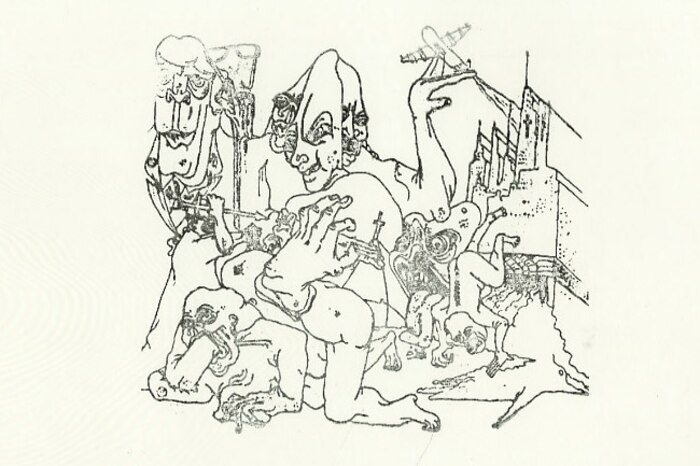
The first Forbidden Planet cover was for D’Marc Cantu.
Paul Gondry: It was a high school drawing from when I was smoking a lot of pot. I used to do like really psychedelic things, all the bodies together and stuff.
So you were 17 when you did this?
Yeah, probably 17 or 16.
Where were you going to high school?
I went to high school uptown in the international French school, like really preppy, really fascist, and depressive.
I guess you had art classes there. What did your teachers say?
I didn’t really have good art classes there, the teachers used to think I smoked crack. They were like, “You should see a psychiatrist.” I left my drawing pad once, and they called my dad being really worried. My dad was furious to hear that they were saying that, cause he is an artist so he understands. So he just started yelling at them. He thought it was actually proof that I am healthy, cause I am getting it out. It’s kind of funny.
Did your dad ever push you in any direction?
No, he just taught me to finish projects. Anything you make, you have to finish it, because you can only tell what it looks like in retrospect. But he didn’t tell me you should make art this way or that way.
How did you meet Jurg?
Jurg went to school with a lot of my friends when he was going to McGill [University Montreal], and they were doing a lot of music. We had very similar taste in science fiction and anime and dark music.
What kind of anime were you into?
Akira. Like the cool shit. There’s one called Battle Angel Alita. The drawings are really cool. It’s about body modification in the future... I really like post-apocalyptic stuff, the cyberpunk aesthetic, and I have always been into violence. I like storytelling. I like images that tell stories. Living in a city like New York, you see a lot of crazy shit.
When did you start doing these art projects?
Since I was pretty young. My dad forced me to work on my shit since I was like 12.
Like how?
After school he would arrange that I would have to go to paint at this, like, studio. He would be like, “You have to paint every day. You have to finish everything you do.”
And what was the stuff like you were making when you were 12?
It was similar [to what I do now] but maybe more colors, more cartoony I guess, I don’t know if I have stuff here. I have some paintings on the wall that are pretty funny. Do you want to see one right now?
[Paul grabs the laptop and walks through the rooms of a Victorian house, with paint flaking off walls filled with uncanny drawings and paintings.]
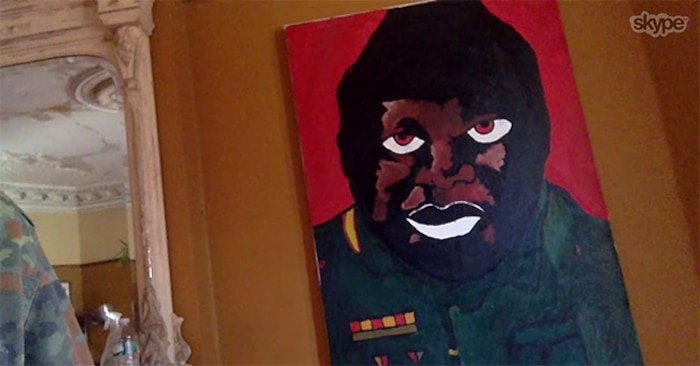
I used to draw dictators.
How old were you when you did that one?
That one, maybe 14. I don’t paint as much, cause I don’t have the space.
And who is on the photo?
Oh, that’s Idi Amin, he was an African dictator, Uganda. I was obsessed with dictators when I was a kid.
Why?
I guess it’s just really surreal, like Nazis and shit like that.
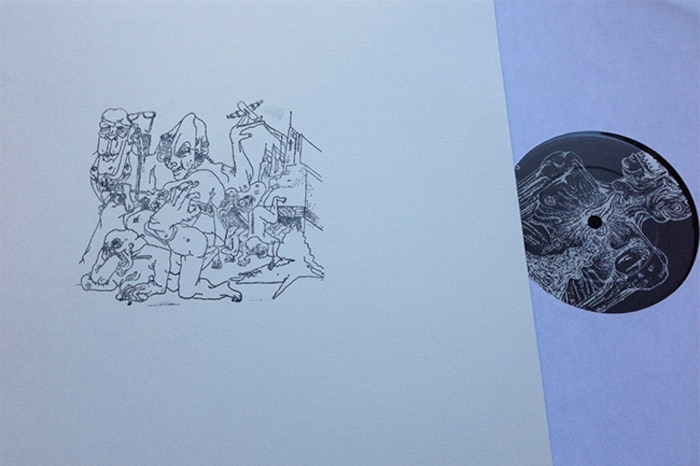
What about the center label on the D’Marc Cantu?
Jurg Haller: I just saw that on Paul’s blog and liked it. Cause a lot of his drawings have some kind ulcer that is producing some kind of goo, or some kind of creature is crawling out of some kind of diseased being. I like this one cause it is kind of unclear what exactly is going on, it seems as if something is coming out of this emaciated figure, but it is not really clear. Eli [Sheiner] printed it out and rescanned it a couple of times, so the center label has this kind of washed out look to it.
Eli Sheiner designed the FP artwork 001-003. Later designs were done by Ria Roberts. She did the design for FP007 and the layout for 004-006. With all of the designs – including the earlier releases – I had a specific idea as to how I wanted it to look, so I worked very closely with both designers.
How did you find Paul?
He was mutual friends with a lot of my friends in Montreal, French kids who had gone to school in Manhattan. And one of the first times my roommates and I came to New York from Montreal, we all hung out. He has a big house in Brooklyn. Paul started showing me his drawings and I was really into it, and then when I started the label it was just a natural thing to have Paul do all the artwork, cause we connected on both a personal and artistic level.
And what did his house look like?
I mean, you can imagine from his drawings. It is pretty wild. His drawings are everywhere. It is a pretty big house. There is a recording studio in the basement and it’s kind of old and has a kind of Victorian feel to it, but somewhat dilapidated. So a little bit in decay, but it is all very well maintained. It reflects Paul a lot.
And he lives there on his own?
Yeah, but there are always people staying there. I mean, he always has some kind of roommate crashing there, cause he constantly has a lot of projects that he is working on. In that sense, we are very similar.
What was it that drew you to Paul’s art?
It was dystopic, it was futuristic and there were always elements of contamination or decay.
Like in what sense?
Contamination as some kind of breakdown. Either a person or an environment. It really applies to anything, any situation. I like this idea of contamination a lot. That appealed to me, and then it was always looking forward, always futuristic, so that also appealed to me. There is a comic book element to it as well.
The first time I met Paul, he was dressed in a huge suit with suspenders, a do-rag and dress shoes.
This fascination with contamination is definitely a trope that appears a lot in Japanese anime. There are elements in Paul’s artwork that are similar to Japanese anime or inspired by it, not necessarily on an aesthetic level, but conceptually. At the same time, Paul has so many interests that feed into his work, and that is partly why we get along very well. He is interested in such a huge variety; he makes rap music, he is interested in art, industrial music, politics, a lot of different areas, so it all kind of collates into one thing. He is a real character, very idiosyncratic.
Do you remember the first time you guys met, your first impression of him?
Me and my friends went on a trip to New York and stayed at Paul’s place. He was showing us the band Salem, who I also became interested in. That was my first impression of Paul. He was dressed in a huge suit with suspenders, a do-rag and dress shoes.
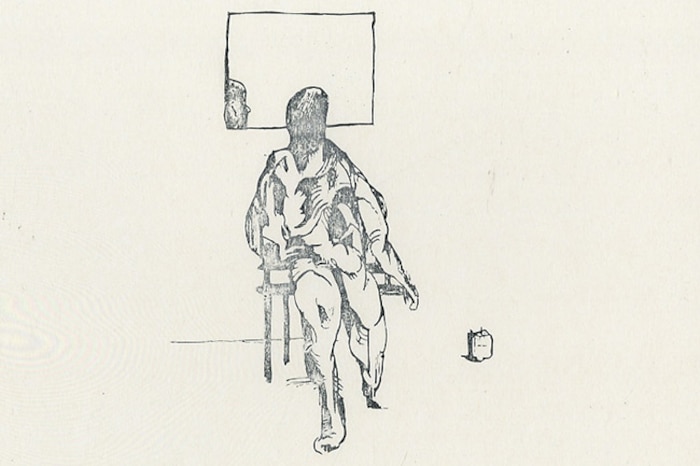
The Breaker cover.
Jurg Haller: That one I saw at Paul’s house and then he posted it online. I think this is one of the few covers where he really had the label in mind, or knew that I would really like it.
Paul Gondry: I made that one for him.
How did you do that?
Paul Gondry: He asked me to make him some covers, so that one I remember thinking about his aesthetic, cause we both like Francis Bacon a lot and German aesthetics.
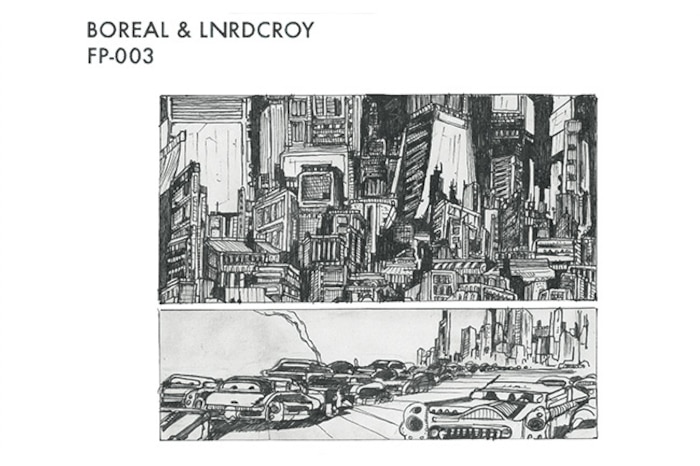
The Boreal and Lnrdcroy cover.
Paul Gondry: It’s part of a comic book I made. I haven’t finished it cause the story makes no sense. I made this 60 page comic book, but there is no story, so I don’t know what to do with it.
But you say you love storytelling, why would you do that?
Because I got confused I guess. I had a story, but then I just got too excited with drawing and then stopped thinking. I mean there is a story. There is characters and narration but there is no text. I forgot to write the text.
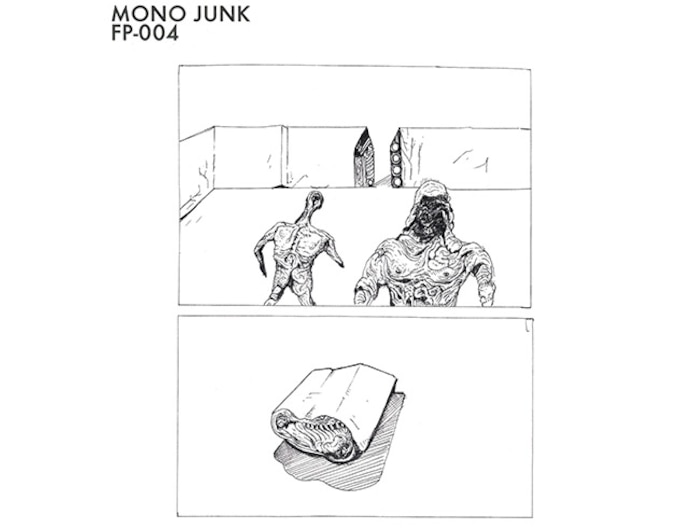
The Mono Junk cover.
Yeah, I like that one, it’s probably my favorite one.
Why?
It has got that really sharp lines and it is mixed with the organic style that I do, so it is a combination of two things I like. It’s really clean, like a ruler, and then messy a little bit. That’s how the inside of my head feels, it’s like order but disorganized, so I relate to it more cause it is more of a nightmare scheme or something.
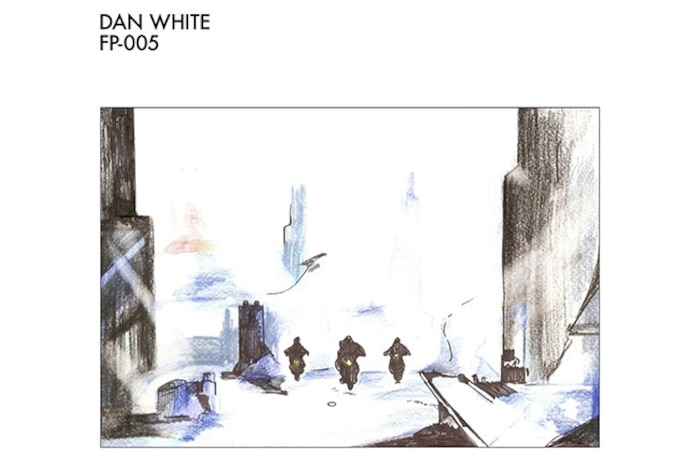
When did you do these?
I think last year.
You kind of went in to more color.
Yeah, I have periods where I will do colors and periods where I will do a lot of black and white. Those I was doing with color crayons or whatever, but they are still very monochromatic.
How long does it take you to do a drawing like this?
Wait... let me... I am trying to look at it to understand. [Ten seconds of silence.] Maybe 25 to 50 minutes? It depends; the ones that are very detailed usually would take me a good hour, cause I will just be slow at it. But ones like that could have went really fast because it is just a lot of lines and strokes. Those were kind of fast cause I was doing a series, so I probably made like five or ten of those. I will watch a movie and get really inspired and do a whole series around it, the colors and images.
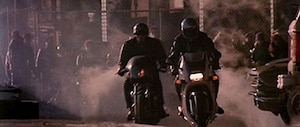
Do you remember what movie?
I am pretty sure it is from Black Rain. Yeah, I found the photo. Let me send it to you. It is more mainstream, I think it is Ridley Scott, but it is inspired by Chinese action movies. I really like Chinese and Asian stuff like that.
Why?
I like the colors a lot, and just the style that they have. It is so different from the typical American gangster Scorsese Italian guy. They look crazy, they look super scary to me. We [Tinyleg] have a web series that kind of has some of that.
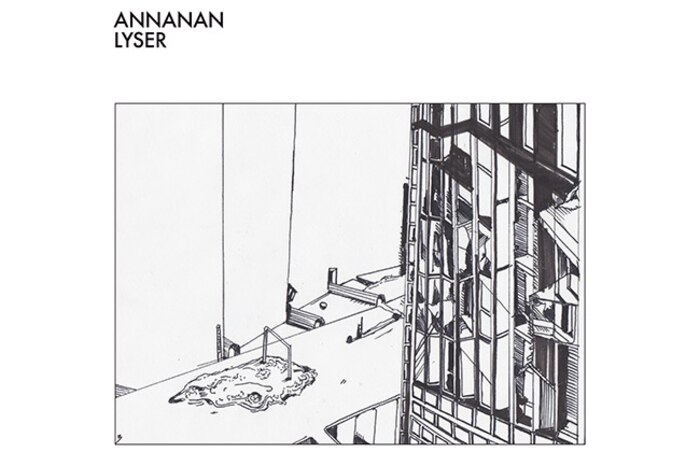
I talked to Jurg about the fact that a lot of your figures – basically everyone – is kind of disintegrating. What is that about?
I don’t know, I thought I had AIDS for a long time so I was freaking out about that, maybe that is a part of it. I don’t [have AIDS] but that was maybe at that time where I was like, “Urgh, my body feels weird, I am scared.” That could been an explanation at that time, but not anymore. I still draw like that. I watched a lot of David Cronenberg – The Fly, Videodrome.
And this aesthetic is present in your work?
Yeah, flesh and a lot of prosthetic film props, I like horror movies. Fucking love horror movies.
Why?
My Dad let me watch anything I wanted when I was really young. So he just showed me a lot of fucked up movies, but it was kind of cool.
Like how young and what kind of movies?
I watched Repulsion, a Polanski movie, when I was probably 7, and it is all about rape and paranoia and cabin fever. Stuff like that marked me a lot. I did watch a lot of movies when I was young, so I became a movie fanatic really early as a kid.
You never got nightmares?
Yeah, so many nightmares, yeah. But I guess everybody gets nightmares, right?
